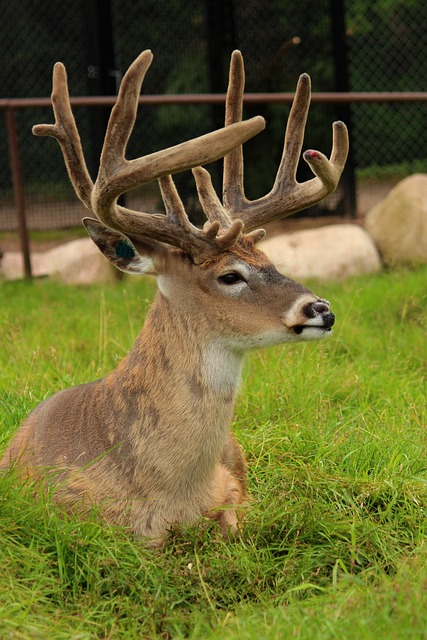Tomorrow marks the beginning of Rifle Season for deer in most Shenandoah Valley counties. This day used to be somewhat of a local holiday with excused school absences, various business closures, and the influx of many hunters from Northern Virginia. However, since Muzzleloading Season started arriving two weeks prior to rifle and archery a month before that, and since the decline of hunting’s popularity, the “First Day” no longer carries the cultural weight it once did.
Nevertheless, many sportsmen still schedule their annual vacations around the fall hunting seasons and rifle season is certainly one of the most popular. Every hunter dreams of harvesting the buck with massive antlers and large steaks. Most of us, however, are content with non-trophy racks and doe roasts while letting smaller ones grow larger for next year.
Every year, some bucks are harvested that have unique antler formations. These variations are all over the map with everything from misshapen beams to drop tines to sticker points. Genetics, food supply, and age are the biggest determinates for antler shape and size but occasionally bucks appear with really odd configurations. Over my father’s 60 years in the taxidermy business, we saw just about every deformity imaginable.
In some cases, bucks injure their relatively soft antlers during the velvet stage while they are still developing. Although they avoid fighting during this time, animals have accidents just like we do and they may fall or bump into a tree or run into one of our cars. These deformities persist for the rest of that year but are not repeated in subsequent years after that rack is shed during the winter months.
Researchers have found, however, that permanent impairments are caused by other factors. They have discovered that misshapen antlers on one side of a buck’s head are often caused by some type of injury on the opposite side of its body elsewhere. As odd as it may sound, being injured by an automobile or wounded by a non-lethal bullet can impact the shape and size of the rack for the rest of a deer’s life.
As I pondered these various scenarios for odd deer antlers, the Holy Spirit revealed that humans are very similar to bucks in this regard. All of us get injured from time to time through relationships, at our jobs, and even at church. Many of these are like the accidents in the velvet that cause pain or distortion for a season but are not permanent. Others, however, are deeper and more long-lasting and may impact us for the rest of our lives.
Unlike whitetail bucks, our emotional injuries are not clearly visible but are every bit as real and at times even more painful. They may have been caused by an accidental collision with a relative or a boss or by something more intentional and serious like abuse. Those hurts persist and even though they aren’t always externally obvious, they do affect our behaviors and personalities.
Like the deer, these prior injuries have a way of manifesting themselves in totally unrelated ways that conceal their real causes. It may be angry outbursts, deep depression, or an inability to develop close relationships. We may not limp nor be asymmetrical in appearance, but the lingering consequences are very real and lasting.
Thankfully, unlike many deer injuries, ours can be cured. The Holy Spirit can apply the healing power of Jesus to both physical and emotional wounds. He often does so through Christian counselors, friends, and pastors who can help us develop therapy exercises to minimize our pain. Trained and gifted individuals can lead us through healing strategies of forgiveness and mercy. Prayer is also a therapeutic balm, both our own and that of others, as is a good daily dose of the medicine of God’s Word.
As hunters enter the woods with their rifles this week, may the headgear of their quarry remind us of the spiritual truths we can learn from them. Blessing, George
